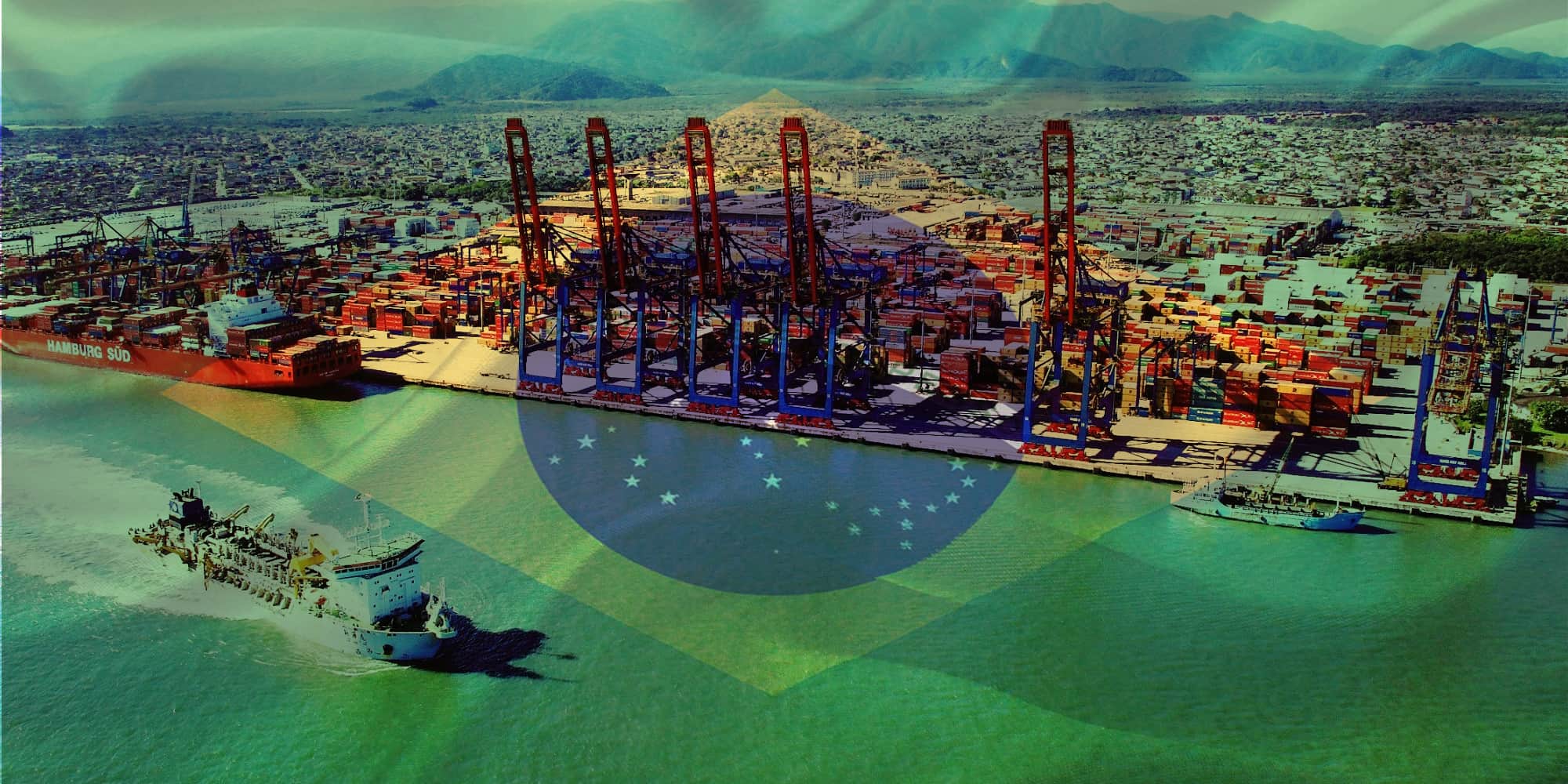As you may have discovered in our previous guides, Latin America is an untapped gold mine when it comes to various aspects of trade and export. Multiple companies are already recognizing the economic potential of the region and they are currently investing in it. As with other south american countries such as Peru or Colombia, Ecuador is a land of promise for importers and exporters. This trade & export guide will attempt to answer most of the questions you may have on the Ecuadorian Market and the insider information you need to know to successfully ship to Ecuador.
Challenges to Consider when Exporting to Ecuador
To fully understand Ecuador trade & export opportunities, we first need to note a thing or two about Ecuador’s recent history. Only since 1979 has Ecuador experienced the necessary change towards democracy which brought much-needed investment and interest from the private sector.
Since that time, Ecuador has had relatively steady development, and an important growing demand for imports (+14,3% in 2017, +7,5% in 2018 of growth rate). So, the best way to consider Ecuador is as a growing economy in Latin America, with still some challenges to overcome, especially when it comes to exporting to this country. Some of the more notable ones include:
- Time inefficiency – Even though Ecuador has improved port infrastructure and abolished documentation requirements, trade and export over the border can still be time-consuming. The border compliance on exports is 96 hours, which is far greater than the regional average of 62,5 hours.
- Lack of transparency – As it is with most developing countries, informality, bureaucracy and lack of efficiency of the public administration are still an issue in Ecuador. While we can witness that the situation is improving (Corruption Perceptions Index ranks Ecuador in 2019 as 93/198 countries vs 118/198 in 2012), Ecuador still has a long way to go. So, if you plan to export to Ecuador, consider finding a reliable partner to help you out.
- Difficulties with finding a local partner – The language barrier can be hard to overcome in Ecuador, especially when it comes to finding business partners.
- No IPPA (Investment Promotion and Protection Agreement) – The government of Ecuador deemed that IPPA was incompatible with the Ecuador constitution.
Business Opportunities to Consider when Exporting to Ecuador
Since Ecuador is in development, it is brimming with business opportunities especially for heavy equipment exporters. The biggest industries that you can invest in are:
- Infrastructure – One thing that usually follows growing economies is the need for better infrastructure. Therefore, if you plan on making the most out of Ecuador’s economy, try to connect your business efforts to its infrastructure. The most notable investment opportunities are in ports, roads, housing, and underground railways.
- Renewable energy – While Ecuador has a large supply of oil, Ecuador’s government is trying to stray away from using it as a primary energy source. More and more environmentally-friendly energy systems are being developed, particularly in hydro-electric, wind, and geothermal industries.
- Mining – Over the past couple of years, there have been substantial foreign investments in mining. Therefore, there is still a definite need for industries revolving around mining such as geological services, mineral testing, and power generation services.
- Oil – Seeing as oil accounts for 40% of Ecuador’s exports, it should come as little surprise that investing in the oil industry here is still a viable business opportunity.
Top Exports to Ecuador
In 2019, Ecuador imported 20.3 billion US$ worth of goods. This is a drop-down by -5.2% since 2015 and down by -11.9% from 2018 to 2019. Among the top exports to Ecuador are:
- Mineral fuels including oil: US$4.4 billion (21.6% of total imports)
- Machinery including computers: $2.2 billion (10.7%)
- Vehicles: $1.4 billion (7.1%)
- Electrical machinery, equipment: $1.3 billion (6.2%)
- Plastics, plastic articles: $1 billion (4.9%)
- Pharmaceuticals: $969.4 million (4.8%)
- Food industry waste, animal fodder: $824.6 million (4.1%)
- Iron, steel: $678.9 million (3.3%)
- Other chemical goods: $495.7 million (2.4%)
- Articles of iron or steel: $418.2 million (2.1%)
Import Restrictions and Prohibitions
If you plan on exporting goods to Ecuador, there are some restrictions you should be aware of.
First off, you need to keep in mind that several commercial goods are strictly prohibited or restricted from bringing into the country without the proper authorization:
- Dangerous goods and hazardous liquids.
- Used cars, trucks, buses and motorcycles from countries other than those from the Andean Community
- Pesticides
- Liquor & Alcoholic beverages
- Soil samples
- Antiques, etc
If you wish to deal with Ecuador trade & export, we suggest that you carefully study their import prohibitions before you start making plans.Also, try to learn about their import procedures and regulations, as they may not be the same as they are in your country.
Shipments not meeting import requirements are subject to a payment of import taxes of approximately 43% applicable to the cost, insurance, and freight (CIF) value which is calculated after inspection by Customs.
Customs Clearance
To go through the customs clearance, you need to have the necessary documentation as per customs regulations.
Customs Duties when Exporting to Ecuador
The first thing to note is that Ecuador is a member of the Andean Community. This means that goods to be imported in Ecuador are classified under the Common Nomenclature of the Andean Countries participating in the Cartagena’s Agreement (NANDINA) Pact.
Most consumer goods imports pay 25%. On the other hand, intermediate goods are usually imported at a 10% or 15% rate. Raw materials and capital goods generally pay between 0% and 5%.
In addition to import duties, all imports are subject to 12% VAT and other minor taxes that do not exceed 1%.
Imports Requirements and Documentation
The following documentation is required to import products into Ecuador:
- Commercial invoice,
- Original or copy of the bill of lading or airway bill,
- Insurance policy in accordance with the Insurance Law,
- Income tax registry number (RUC),
- Certificate of origin when applicable (to qualify for tariff preferences when available), and
- INEN-1 certificate (standards compliance), when applicable.
Modes of Transportation to and within Ecuador
In most cases, exports to Ecuador will be done by ocean freight. The port of Guayaquil is the biggest commercial seaport, handling approximately 90% of Ecuador’s imports and nearly 50% of its exports.
Other important seaports are the terminals of Manta and Esmeraldas.
The two airports available for international cargo are the Mariscal Sucre International Airport in Quito and the José Joaquín de Olmedo International Airport in Guayaquil.
Within Ecuador, you can mostly transport your goods by road.
The Pan American Highway is the major road in Ecuador, connecting all the cities and towns from Tulcán at the north (border with Colombia), passing through Quito the capital, to the south border with Peru. .
Several infrastructural projects are in motion, in order to improve transportation within the country. The biggest developments are:
- The road between Manta and Tena.
- The highway between Guayaquil and Salinas.
- The road between Riobamba and Macas that crosses Sangay National Park.
All in all, the transportation capabilities in Ecuador are becoming more efficient and better organized. Therefore, shipping your goods to and from Ecuador should be easier than ever.
Export to Ecuador now!
As you may realize, if you plan to trade and export to Ecuador, there are plenty of things you need to be aware of. Whether it is by sea or air, whether it is for heavy cargo or manufacturing goods, shipping cargo to Ecuador becomes easier when you choose a specialized freight forwarding company to help you.


 LAC Team
LAC Team


